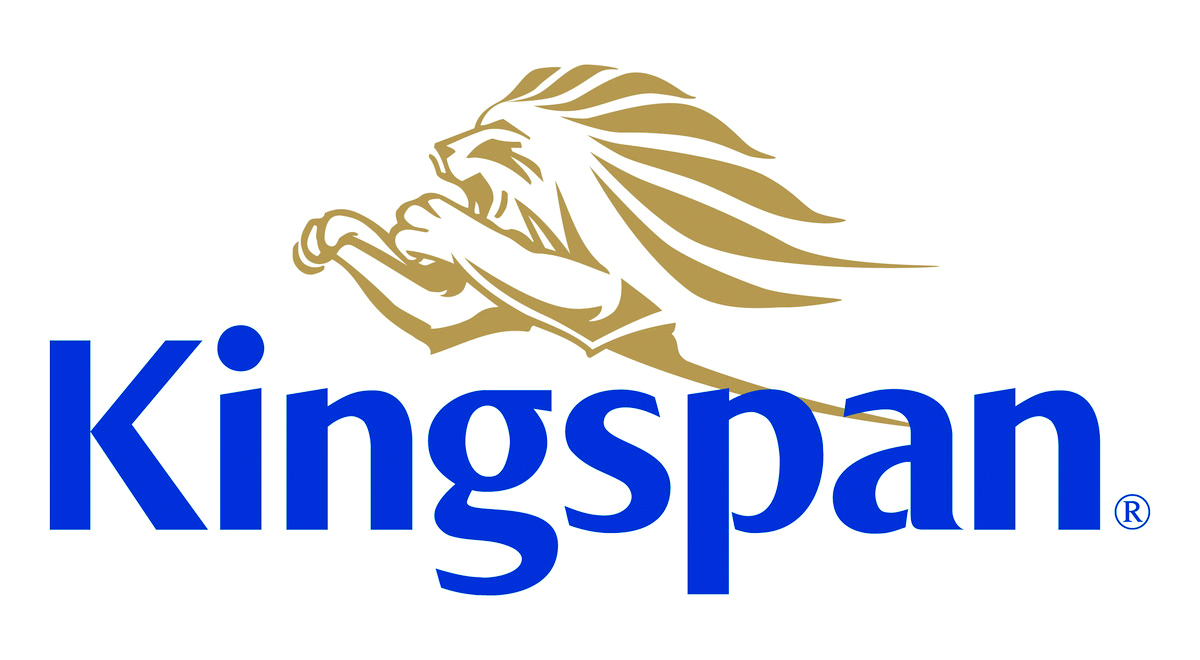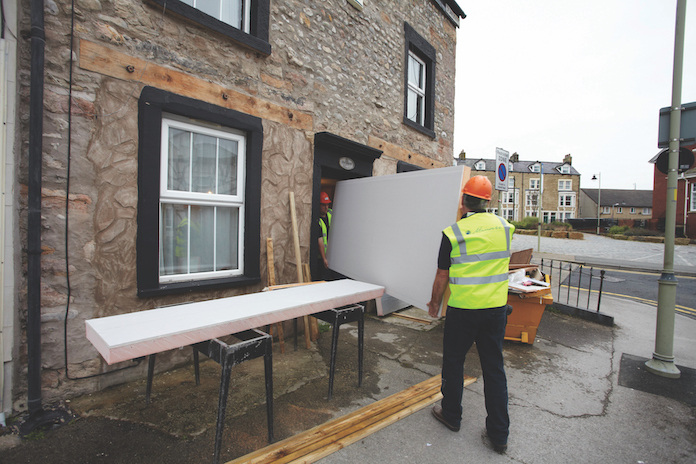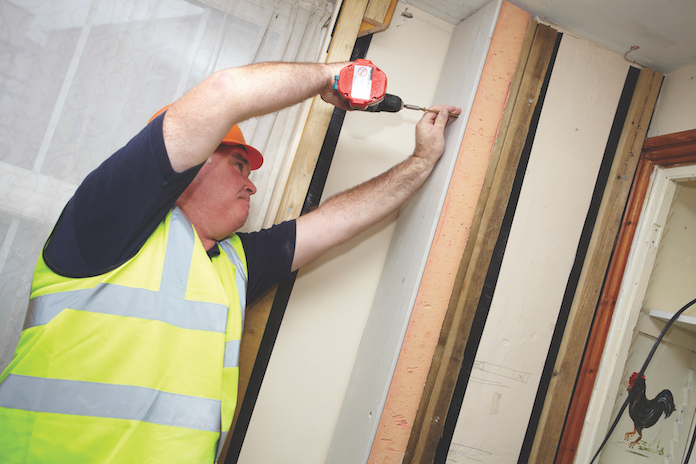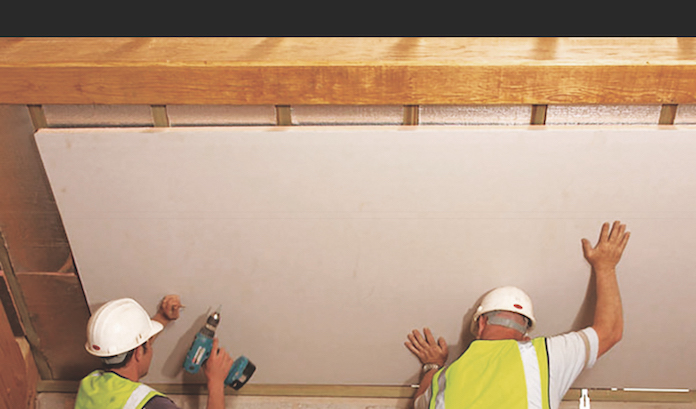As the government launches its Green Homes Grant, this CPD, in partnership with Kingspan, explains how the PAS 2035 standard for retrofitting homes operates, and why it is important for contractors to work in accordance with the standard

The Green Homes Grant, which is due to launch in England in September, will provide grants of up to £5,000 per household (or £10,000 for those on low income) towards the introduction of energy efficiency measures (EEMs) in the country’s ageing housing stock. The scheme represents a welcome first step in addressing the carbon footprint of UK homes as part of a commitment to reach net-zero carbon emissions by 2050.
In delivering it, it is critical that the industry learn the lessons highlighted in the Each Home Counts report, overseen by former BRE chief executive Peter Bonfield, ensuring that solutions are suitable for the particular building and form part of a holistic long-term package.
It is recommended that contractors be certified under the 2019 version of PAS 2030 and carry out the work in accordance with PAS 2035. These public specifications establish a clear process for assessing properties, selecting and installing EEMs and monitoring their performance – creating a comprehensive Retrofit Standards Framework.

State of housing stock
It is well known that Britain has among the oldest and most draughty housing stocks in Europe. With the sector accounting for around 14% of total UK greenhouse gas emissions, the performance of existing homes needs to be addressed urgently. Central to this is the commitment to raise the Energy Performance Certificates (EPC) of all homes to a C (where “practical, affordable and cost effective”) by 2035 in England and Wales and 2040 in Scotland. This will represent a major challenge, with over two-thirds of UK homes currently failing to reach this target.
At the same time, concerns have been raised about the quality of workmanship on energy retrofits completed under previous schemes such as the Green Deal. This contributed to a performance gap between the expected and actual energy savings in homes and in some cases has also led to property damage. To address these concerns, a review was formed back in 2015, culminating in the Each Home Counts report.

Each Home Counts
The report identified 27 key recomm-endations for raising standards and delivering value for money with energy retrofits. Together, these were designed to provide a robust framework for the end-to-end delivery of retrofit EEMS supported with clear oversight and codes of conduct.
Core to the new framework was a quality mark for operatives. The government board tasked with implementing these recommendations has formalised this by expanding the existing TrustMark scheme to cover the repair, maintenance and improvement (RMI), retrofits and energy efficiency sectors. It is expected that any firm wishing to carry out work under any future government funding schemes, including the Green Homes Grant, will need to be a TrustMark-registered business.
Registered businesses can currently be certified under the 2017 version of PAS 2030. From 30 June next year, however, it will become compulsory for all registered businesses to achieve certification under the 2019 version of PAS 2030 and to be able to evidence that work complies with the processes within PAS 2035.
New process and roles
The Retrofit Standards Framework also identifies a number of distinct roles, each with specific vocational or professional qualification require-ments. These new positions are designed to raise both competency and accountability throughout the retrofit process. It is possible for a suitably qualified individual to fulfil multiple roles within this process, providing any conflicts of interest are highlighted.
To ensure consumer protection, a retrofit coordinator is appointed on each project – either by the homeowner or contractor. They are responsible for oversight of all work, including the commissioning and monitoring of EEMs, ensuring all processes are conducted in line with PAS 2030 and 2035. This process is broken down into clear stages:
The property owners meet with a retrofit advisor to discuss options for improving their home’s energy performance, including both EEMs and changes to occupant behaviour.

If they are happy to move forward, the retrofit coordinator then carries out the risk assessment, drawing from EPCs, occupant interviews and site visits/surveys. The property is given a risk path grading from C (high risk) to A (low risk). This grading determines how subsequent steps are approached and must be repeated after each EEM is implemented.
The retrofit assessor then conducts a whole-dwelling assessment requiring an appraisal of factors such as the dwelling’s construction, age, condition, suitability for improvements and any planning constraints. Further assessments must be carried out on projects on risk paths B or C, including analysis of ventilation and air permeability. An assessment of the significance of the building may also be required following the guidance in BS 7913: 2013 Guide to the Conservation of Historic Buildings.
Based on the findings in the whole-dwelling assessment, a retrofit designer then creates the package of EEMs, paying attention to construction details and how the different measures will interact. An improvement option evaluation is also required for dwellings on Risk Paths B or C, outlining the payback period and carbon cost-effectiveness of the measures.
The retrofit coordinator then sequences the measures within a 20-30 year medium-term improvement plan and communicates this to the client, outlining any statutory approvals that may be required and obtaining their sign-off for any work. They also brief the retrofit installers on the design intent and sequencing – including an overview of any new technologies.
The relevant EEMs are then fitted, tested and commissioned by the installers in accordance with PAS 2030: 2019 (Note: it is the installer’s responsibility to ensure compliance and to evidence this to the coordinator).
The retrofit coordinator then arranges handover with the owner and occupant (if separate individuals), including a physical assessment and guidance on operation and maintenance. All paperwork, such as EEM guarantees, manuals and commissioning records, is retained by the coordinator with copies made available to the owner. They will recommend a new EPC is commissioned and carry this out where agreed.
To ensure expected performance improvements are achieved, all projects are also subject to evaluation and potential evaluation. A retrofit evaluator first conducts a basic evaluation within the first three months after commissioning, requiring the homeowner to fill out a tailored questionnaire and to raise any concerns. If the owner, evaluator or coordinator feels there are any significant issues then intermediate or advanced evaluations are carried out.

Fabric first
When it comes to identifying EEMs, PAS 2035 states clearly that designers and coordinators should look to prioritise improvements to the building fabric, for example through better insulation, before spending resources on other measures.
The particular fabric measures which can be implemented on the property will then be guided by the risk and whole-dwelling assessments. For example, uninsulated solid walls are often a key source of heat loss, however use of external wall insulation may not be possible on solid walled properties which are listed or located within a conservation zone. In these cases, it may be necessary to consider internal wall insulation solutions.
The thermal conductivity (lambda value) of insulation materials should be carefully considered when specifying envelope improvements. The lower this value, the more effective the material is at preventing heat loss through conduction. This means a slimmer thickness can be used to reach the target U-value.
Close attention to detailing is essential when carrying out improvements to the fabric. Each Home Counts highlighted that inaccurate detailing or poor workmanship around junctions often contributed to properties underperforming. It is also important that any improvements to the thermal performance or airtightness of the envelope are matched with similar improvements to ventilation. Once fabric improvements are achieved, measures can then be identified to meet the remaining heat and energy demand as efficiently as possible, including the use of renewable technologies.
Starting right
The Green Homes Grant alone will not be enough to deliver the major changes needed in UK housing to hit the net-zero target as a more holistic approach will be required to achieve this. In addition, its short funding deadline will also make it difficult to fully implement the processes within PAS 2035.
Nevertheless, where possible, it is important that the industry look to begin to implement the Retrofit Standards Framework within these schemes, proving to consumers that these measures can be implemented effectively and deliver lasting reductions in carbon emissions and energy bills.

PAS 2035
The assessment of properties, specification of energy efficiency measures and long-term monitoring processes all come under the specification
PAS 2035 acts as the over-arching document within the new Retrofit Standards Framework, covering how properties are assessed, the specification of EEMs and long-term monitoring. The 2019 version of PAS 2030 has been condensed, with several sections included within the 2017 version now moved across into PAS 2035. For this reason, once firms achieve certification under PAS 2030: 2019, the TrustMark scheme requires them to also comply with PAS 2035.
Before any measures are introduced under the new framework, each property must be thoroughly assessed to create a package of EEMs which is suitable to its particular characteristics.
PAS 2035 sets out the processes for the risk and whole-dwelling assessments which consider various aspects of a property’s design, construction and use which may impact the effectiveness of any EEMs. It is also made clear that occupant health and wellbeing is the first priority during these assessments and must take precedence over any energy efficiency improvements.
A 20-30 year plan is then created, identifying the level of performance which can be achieved and the selection of EEMs needed to reach this. The plan is stored, and updated, within the TrustMark data warehouse. This online portal allows all parties involved with the retrofit process to log their own work in a single location. A Property Hub (also described as a property passport) is also set to be made available to homeowners so they can view relevant information such as guarantees on EEMs already introduced and potential funding for future measures.
Under PAS 2035, occupant engagement is required at several points within the retrofit process as a way of raising consumer confidence and ensuring occupants understand how to get the most from the new measures.
This article has been created by Construction Manager in partnership with Kingspan




